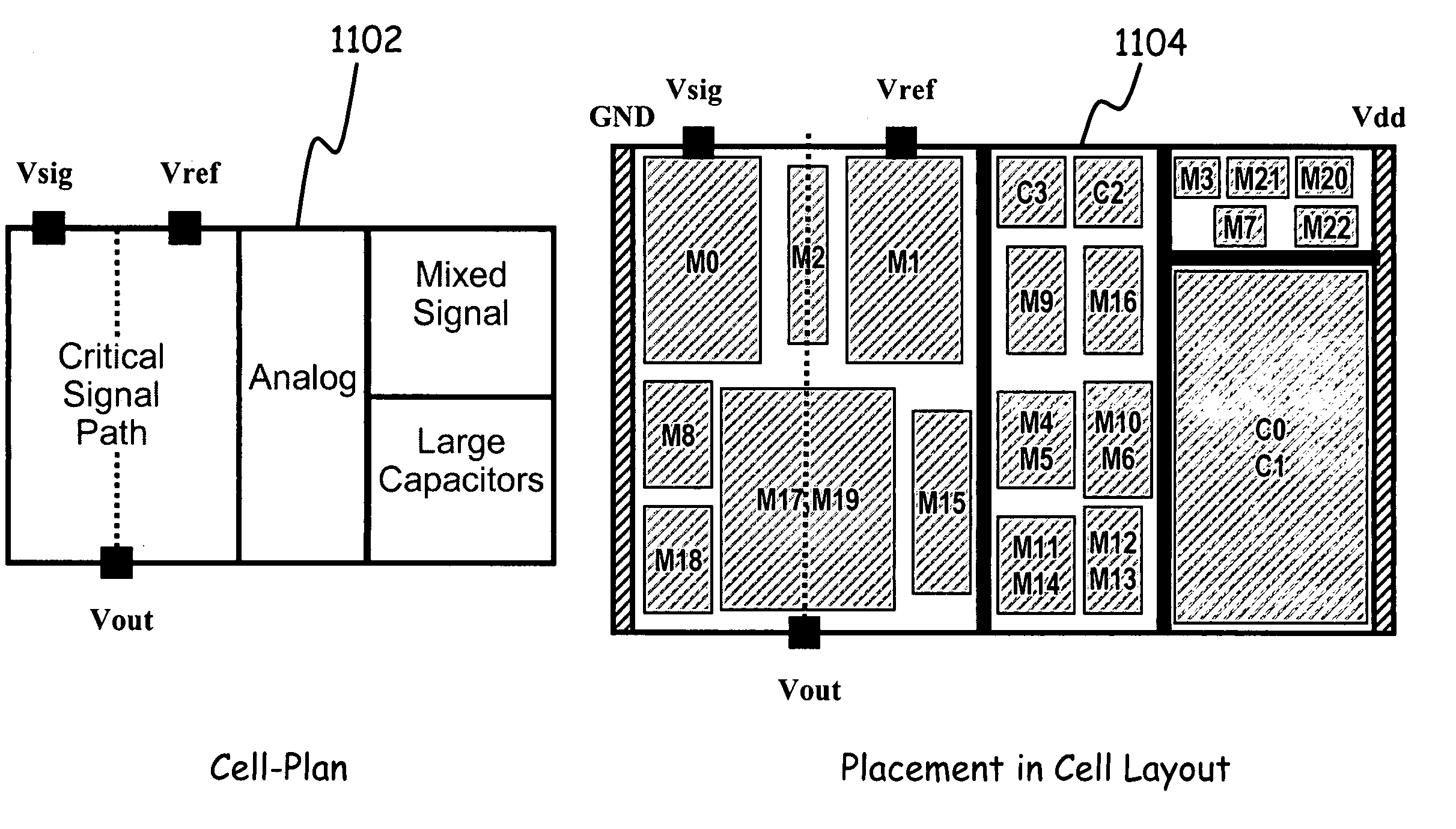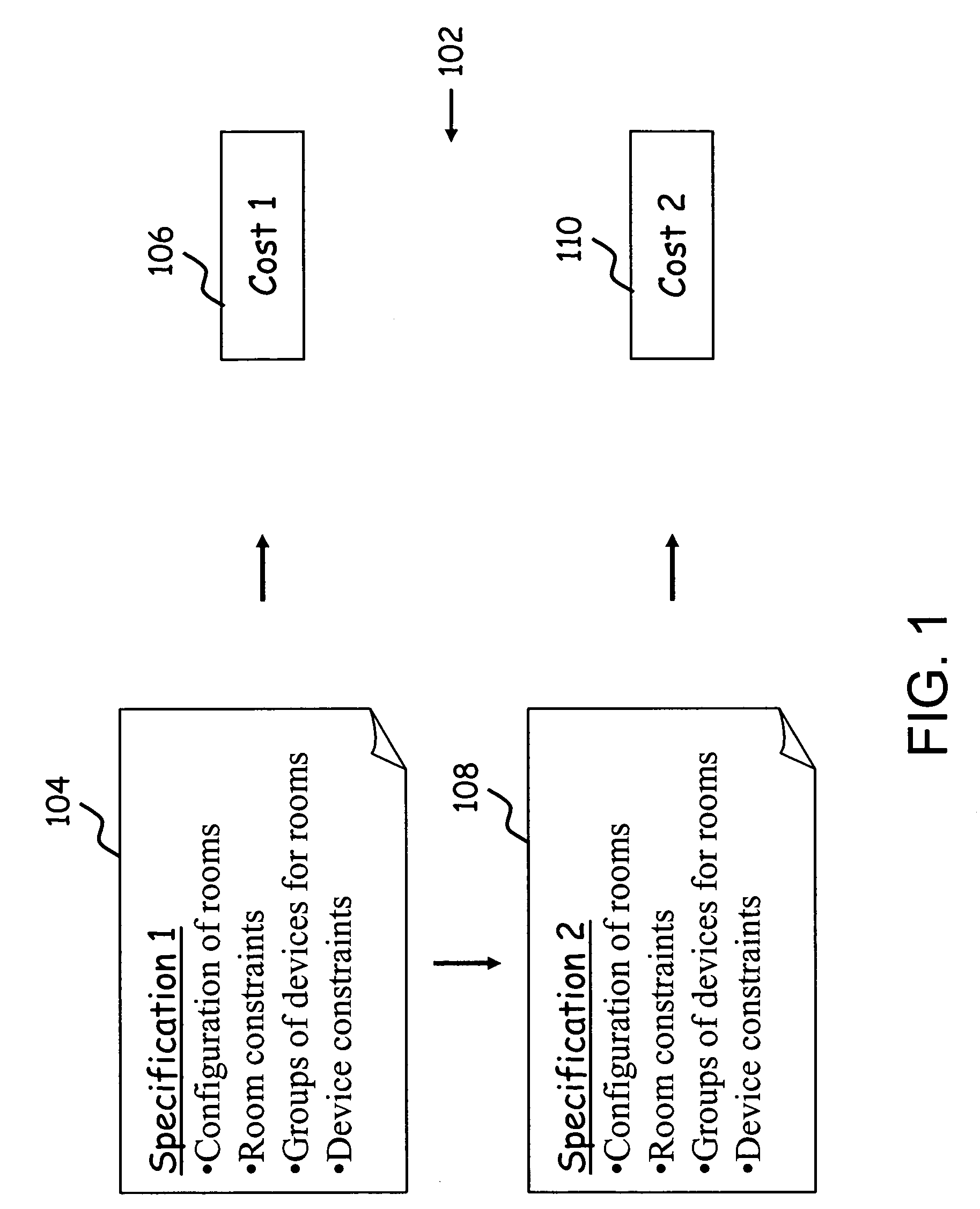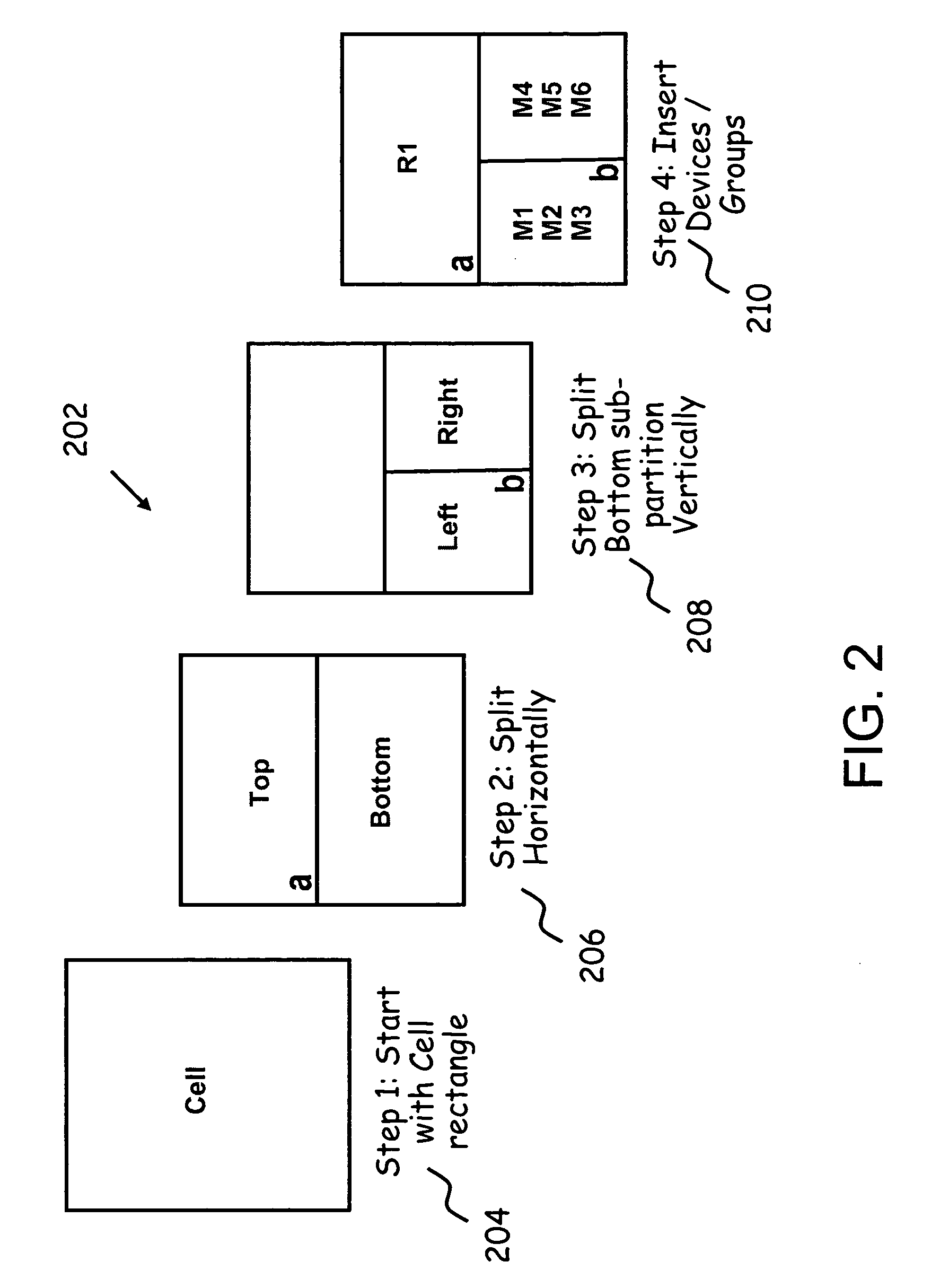Optimizing circuit layouts by configuring rooms for placing devices
a technology of optimizing circuit layout and configuring rooms, applied in the field of circuit layout, can solve the problems of imposing restrictions on the distance between various devices, adversely affecting the electrical behavior of the circuit, and difficult to precisely implement by hand constraints such as matching, symmetry and design rules
- Summary
- Abstract
- Description
- Claims
- Application Information
AI Technical Summary
Benefits of technology
Problems solved by technology
Method used
Image
Examples
Embodiment Construction
[0039]An embodiment of the present invention is shown in FIG. 1. A method 102 for optimizing a circuit layout includes determining a first layout specification 104 that includes a configuration of rooms for placing devices, one or more room constraints for the configuration of rooms, one or more groups of devices for the rooms, and one or more device constraints for devices in the same room. More specific examples of a specification 104 are discussed below to illustrate arrangements that include constraints on rooms and devices for a circuit layout with particular focus on analog and RF (radio frequency) layouts although other applications are possible. A first cost value 106 measures one or more optimization criteria such a path length, area, or gain. Next a second specification 108 is determined possibly by some adjustment or perturbation of the first specification 104 and a corresponding second cost value 110 is determined for comparison with the first cost value 106. This proces...
PUM
 Login to View More
Login to View More Abstract
Description
Claims
Application Information
 Login to View More
Login to View More - R&D
- Intellectual Property
- Life Sciences
- Materials
- Tech Scout
- Unparalleled Data Quality
- Higher Quality Content
- 60% Fewer Hallucinations
Browse by: Latest US Patents, China's latest patents, Technical Efficacy Thesaurus, Application Domain, Technology Topic, Popular Technical Reports.
© 2025 PatSnap. All rights reserved.Legal|Privacy policy|Modern Slavery Act Transparency Statement|Sitemap|About US| Contact US: help@patsnap.com



